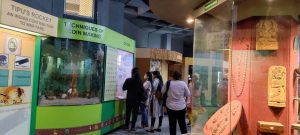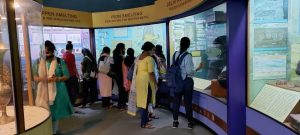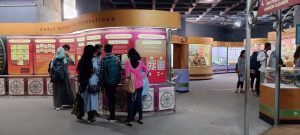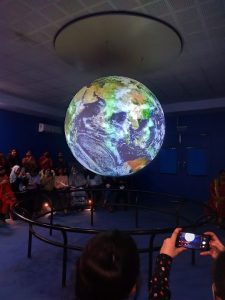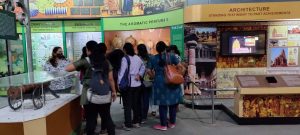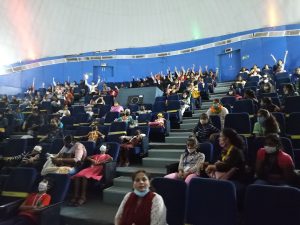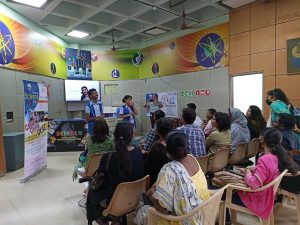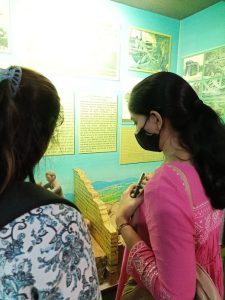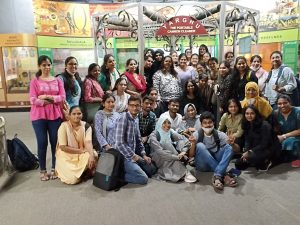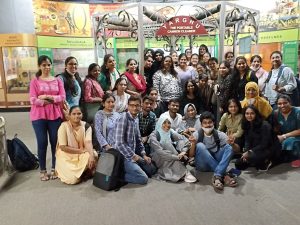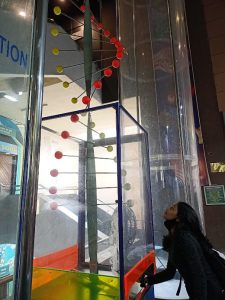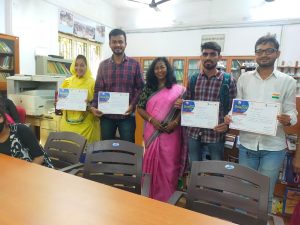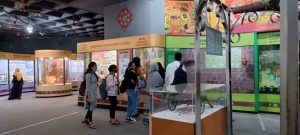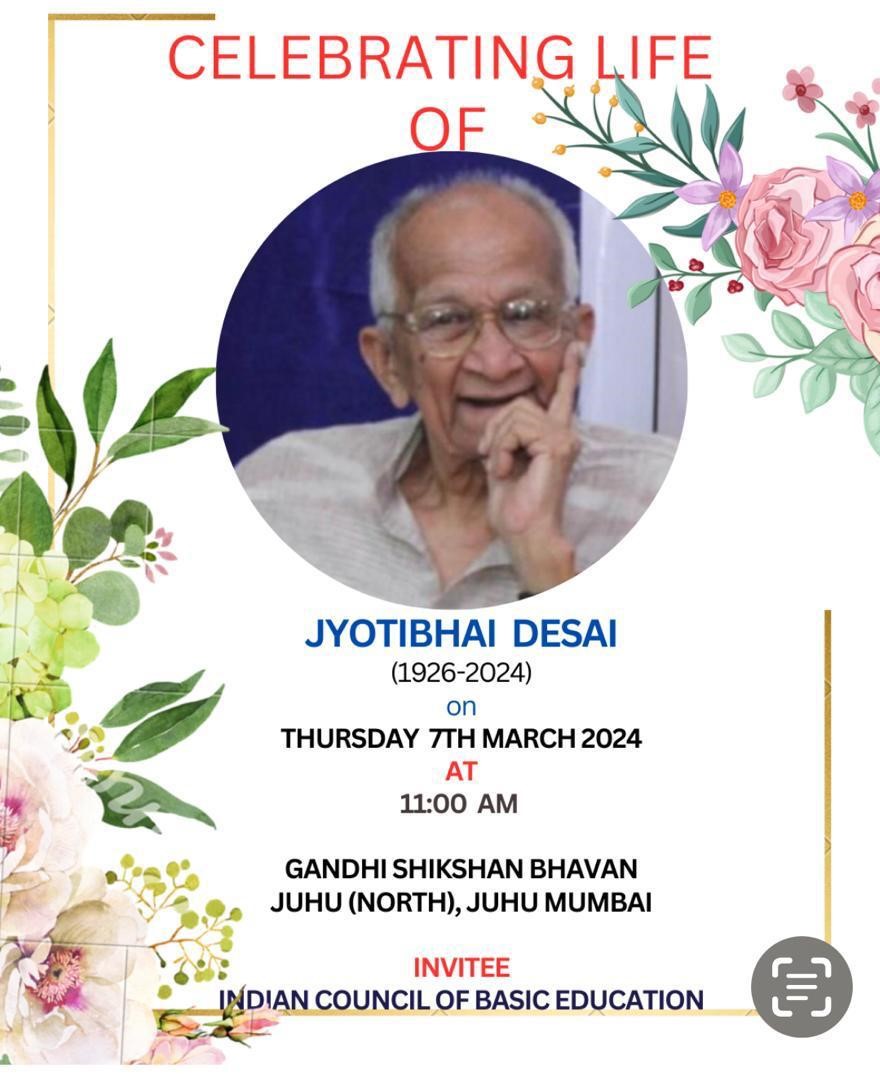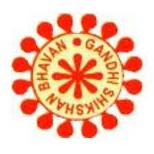
Visit to Nehru Science Centre | 25 Feb 2022
Visit to Nehru Science Centre | 25th February 2022
Good Morning one and all. Today is 28th February which is celebrated as National Science Day each year. Science Day is celebrated to honour the contribution of Physicist and Nobel Prize Winner Sir C. V. Raman. On this day in 1928, C.V. Raman discovered a phenomenon of scattering of photons which was later known as ‘Raman Effect’ after his name. After two years in 1930, he got the Nobel Prize for this remarkable discovery and this was the first Nobel Prize for India in the field of Science. To mark the discovery of his famous phenomenon, National Science Day is celebrated in India on 28th February each year. The theme of National Science day 2022 is ‘Integrated Approach in Science and Technology for Sustainable Future’.
Nehru Science centre is the largest interactive science centre in India. In 1985, this centre was opened for the common public and it consists of more that 500 hands-on and interactive science exhibits on different concepts in Science and Mathematics.
Gandhi Shikshan Bhavan’s Smt. Surajba College of Education had organised a visit to Nehru Science Centre which is at Worli on 25th February 2022; during the Science Week that is celebrated from 21st to 28th February. This was the first educational visit after the college opened in offline mode, after the Covid pandemic. 20 students from F.Y.B.Ed and 40 students from S.Y.B.Ed had joined for the visit. All the students and the professors met near the entrance of the Science Centre around 10:15 am.
First we went to watch the Odyssey show where we saw the documentary on dolphins in 3D mode. It had a detailed explanation on physical characteristics of dolphins, different species of dolphins etc. It explained how dolphins are one of the most intelligent mammals, their medium of communication through whistling and different types of sounds, their symbolic language, their expression of emotions like sorrow and happiness. It explained the interesting fact of how dolphins record sounds like computers and differentiate between the sounds.
After that we went to the section of Science on Sphere. There we saw each planet in our Solar system along with Moons of some planets on a spherical ball-like suspended object where projections were used on all four sides so the sphere appeared to be moving although it was stationary . Special characteristics like the surface, atmospheric conditions, temperature of each of the eight planets was explained.
Next we took a lunch break of about 35 to 40 mins and all met again excited to learn and see new things after this short break. We next went for a motion simulator ride. We all thoroughly enjoyed the ride in the simulated vehicle. It was a thrilling experience for all. The movie ‘Great Wall of China’ projected in 3d mode made this ride even more like an adventure.
After that we went to different galleries. The first one is the Hall of evolution. There we saw the history of humankind. There were different sections such as Wheel, a great invention, Braille system, Sensory organ, Plasma sphere invented by Nikola Tesla is a glass globe with lightning bolts streaming from a central electrode towards the outer surface.
In the maths related gallery, Word Numerals and Decimal Place value system where in early centuries of the Christian era a system of expressing numbers by words was evolved. It also includes Area of a Circle, Circle and its Diameter, Big numbers, Pythagoras or Sulba Sutra, Square root and cube root, The technology of India etc.
We also saw Sushruta the plastic surgeon, how in the earlier times plastic surgery was operate. There were replicas of different surgical instruments used in the plastic surgery. There was another section explaining the process of preparing Bhasma.
At the end we saw some experiments on liquid nitrogen which one of the in-charge at the Nehru Science Centre performed. We were mesmerised to see what happens when a balloon is put in liquid nitrogen, the effect of filling a cooker with liquid nitrogen and so on. And last but not the least, some of us saw an extra show at the end, called Kids Show which depicted aquatic life since ancient times and the evolution of different aquatic species.
Many of us had visited Nehru Science Centre before as students but this time visiting it as a future teacher was a different experience. We saw each section from a different perspective, to learn something new and to add it into our lessons to make them interesting. Also, we could see the relation between Science and the other subjects. Later on most of us left the Nehru Science centre full of knowledge and learning and with a small thought at the back of our mind about whatever we had learnt.
Today, life has become easier as compared to what it was earlier and we can say that all this is due to scientific and technological advancement. Improvement in the Medical field, Communication, Bio-technology, Agriculture, Industry, Manufacturing etc has improved the quality of our life. So, our responsibility as a citizen and as a teacher is to understand the role technology has played in our life as well as understanding the need for sustainable development. And finally, we would like to thank our Principal and our professors for giving us this opportunity to visit Nehru Science Centre.

